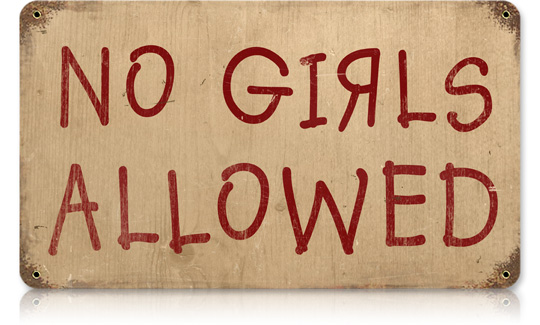When Gears of War first debuted in 2006, I hated the game — the controls felt wrong to me, the game bored me, and everyone I knew was obsessed with it, which made me hate it more out of sheer annoyance. So if you’d told me that seven years later I’d be calling the franchise’s third installment the most progressive title of its year, I’d have laughed in your face. And yet when it comes to looking at box art, no game comes close to offering diversity like Gears of War 3.
But that’s a low bar, considering 2011 looks to have been a particularly poor year for diversity in covers for top-selling games. The good news is that 2012 was an improvement. The bad news is that 2011 seems to have been the year of the muscle-bound white dude.
Top-selling games in 2011:
1. Call of Duty: Modern Warfare 3 (360, PS3, Wii, PC)
2. Just Dance 3 (Wii, 360, PS3)
3. Elder Scrolls V: Skyrim (360, PS3, PC)
4. Battlefield 3 (360, PS3, PC)
5. Madden NFL 12 (360, PS3, Wii, PSP, PS2)
6. Call of Duty: Black Ops (360, PS3, Wii, NDS, PC)
7. Batman: Arkham City (360, PS3, PC)
8. Gears of War 3 (360)
9. Just Dance 2 (Wii)
10. Assassin’s Creed: Revelations (360, PS3, PC)
Figure breakdown is a little more difficult in 2011, as there were various boxes for Just Dance and quite a few limited/special editions for games. In the instance of alternate box arts affecting data, I will put a second result in parenthesis after the first.
Number of figures on game boxes: 17
Female figures on game boxes: 5 (an increase!) (4)
Gender-ambiguous figures: 0 (1)
While it seems women won out in 2011, as they were more present on game boxes than in 2012, this appears to be only the result of having two Just Dance in the top ten that year, as the Just Dance box formula seems to be two women and one man. However, an alternate box swaps out one obvious woman for a probably-male figure that I’ve marked as ambiguous. Just Dance kept their formula in other ways, too, by putting women in less clothing than the men, though on one of the various boxes for Just Dance 2, one women actually got to wear a pair of pants.
But if you take away the Just Dance titles? We drop to 11 total figures, and a single woman represented. Yikes.
 So in 2011, it’s Gears of War that affords women a place in this very blunt man’s world. GoW 3 features a woman with a sizable gun and, even better, the muscles necessary to wield it. Her presence (and physique!) is not only heartening, but so is the fact that she’s dressed no differently than the men on the box, with the small exception that her pants are much more form-fitting than those on two of the men. Still, this cover does not emphasize her in a sexual way–just in a badass way. (Industry insiders, take note: they still moved a lot of units.)
So in 2011, it’s Gears of War that affords women a place in this very blunt man’s world. GoW 3 features a woman with a sizable gun and, even better, the muscles necessary to wield it. Her presence (and physique!) is not only heartening, but so is the fact that she’s dressed no differently than the men on the box, with the small exception that her pants are much more form-fitting than those on two of the men. Still, this cover does not emphasize her in a sexual way–just in a badass way. (Industry insiders, take note: they still moved a lot of units.)
So perhaps now you’re saying, listen, Alisha. We’ve got more women, including two women in pants, one of whom has real muscles, and yet you told us diversity suffered in 2011’s covers. How can that be? Well, friends, it’s not all about gender.
Non-white figures featured, based on appearance: 1
Yes, just one. And there he is, in the back ranks on the Gears of War 3 box. Hello there, mister racial diversity representative. Thank you for coming.
An argument could possibly be made in favor of Assassin’s Creed: Revelations, as Ezio looks a little swarthy. Based on looks alone, I would place him tentatively in the racially ambiguous category, but would probably take him out again as soon as I knew anything about the game. So if I want to be very generous with 2011’s top crop, I might say there are 1.5 people of color present.
From where I sit, that doesn’t seem particularly inclusive. I think it’s also important to note that in the two-year period I’ve examined so far, there are no games that don’t fit into a franchise, and that’s where the bulk of the resources are going when it comes to game design. Gamers are buying into the same experiences, year after year, and those experiences push women and people of color to the fringes.
But do they have to? Is a franchise not the place a studio could take a risk? Ubisoft has safely ventured outside of the white-male norm with Assassin’s Creed, though their female-driven title was not a main entry in the series, and the franchise has survived. But will they innovate further? Will another studio take a similar risk? Or will we see the same numbers for years — a rise in the number of people of color only when sports games want to feature non-white figures, and women and minorities otherwise relegated to the background?
Next up: games from lower tiers of sales. Perhaps the results will begin to take on a different shape.





One thought on “Looking from the Margins, Part II: 2011 in Covers”